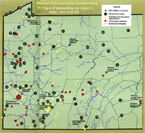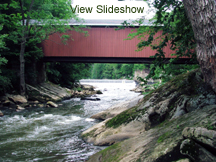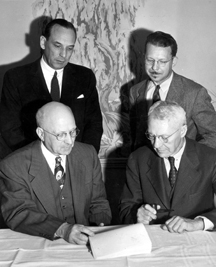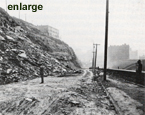|
Conserve |
|
| Conserve 75th Anniversary Commemorative Issue |
| 1930s - 40s |
| 1950s |
| 1960s |
| 1970s |
| 1980s |
| 1990s |
| 2000s |
| Fall 2007 Home |
| Past Issues |
1930s - 40s
Ten Founding Members When the Western Pennsylvania Conservancy (then the Greater Pittsburgh Parks Association) received its certificate of nonprofit incorporation and charter 75 years ago on February 16, 1932, it was hardly an auspicious time to found a nonprofit conservation organization. Three years into a major economic depression a group of ten citizens, each of whom had suffered financial loss (the Dow had dipped to 41 around this time), came together because, according to Dr. Graham Netting, “they were sincerely devoted to serving the best interests of the community.” The ten founding members were: Edward Vose Babcock — served as mayor of Pittsburgh during World War I and as a county commissioner. Created public parks years before it became politically popular. Frank L. Duggan — President of three ice companies — organized the “Helping Hand” charity that fed more than 5.5 million and sheltered 1.3 million Pittsburghers during the depression. Howard Covode Heinz — President of H.J. Heinz from 1919 to his death in 1941. His concern for inner city children led to the founding of “Sarah Heinz House” and Heinz House Camp just south of McConnell’s Mill. Richard Beatty Mellon — President of Mellon National Bank. He obtained the land and was instrumental in building the University of Pittsburgh. William Singer Moorhead — The association’s lawyer, he was head of the U.S. Tax Simplification Board in the 1920s for which he never accepted compensation during his 13-year tenure on the board. Frank Reith Phillips — Superintendent for the Pittsburgh Railways Company, he designed the low-floor all-steel streetcars that became standard in Pittsburgh and across the country. Andrew Wells Robertson — The head of Westinghouse Electric, his service as a Conservancy board member lasted 33 years, until his death in 1965. Maurice R. Scharff — President of the Pittsburgh School of Aviation, Scharff was the organization’s first secretary/treasurer. Edwin Whittier Smith — A partner at Reed, Smith, Shaw and Beal, he was a pre-eminent trial lawyer known for his brevity. President Taft appointed him to be a delegate to the International Conference on Maritime Law. James Lyall Stuart — A civil engineer who built Soldiers and Sailors Memorial Hall, the Oliver Building and many buildings on the Pitt and Carnegie- Mellon Campus. He was the association’s first president.
|
McConnells Mills McConnell's Mill and the Slippery Rock Creek gorge, represented nearly 1,000 acres of spectacular beauty. The land belonged to The Pennsylvania Power Company, which had already invested more than $100,000 in the site. Any asking price even remotely close to this figure was well out of reach for a non-profit conservation organization of limited resources that had never acquired acreage on this scale. Still, Pennsylvania Power President Lou Round was hopeful he could sway his shareholders to see the public relations benefits of selling below market value in the name of protecting nature. Round was able to convince Pennsylvania Power shareholders to sell the land to WPC for $30,000, a figure well below its appraised worth. There was concern at the time that the deal be finalized quickly, as Round was scheduled to retire in three months and a new president might not have been as enamored with a negative cash-flow land transfer in the name of conservation. <View slideshow. Moraine State Park Moraine State Park was a dream of the late Dr. Frank Preston. A noted amateur geologist and WPC board member, Dr. Preston studied and mapped the formerly-glacial landscape of Lawrence and Butler counties. Through his research, he recognized that Muddy Creek once supplied a vast lake filled with the melted waters of the last glacier period. His dream was to reconstruct, on a smaller scale, that glacial lake and provide the region with a major new recreational area. While WPC began its work in 1949, it would take until 1969 before the project would come to fruition. <View slideshow. The Importance of McConnell's Mill and Moraine State Parks Creating McConnells Mill -- Pictured standing left to right are A.W. Schmidt, of the A.W. Mellon Educational and Charitable Trust who helped secure funding for the project and Dr. M. Graham Netting, Secretary, Western Pennsylvania Conservancy. Seated from left to right are Louis B. Round, president, Pennsylvania Power Company and Charles F. Chubb, president, the Western Pennsylvania Conservancy. |
1932 Birth of Western
Pennsylvania Conservancy
under its former name—
Greater Pittsburgh Parks
Association. First project:
landscaping and securing the
hillside above Pittsburgh's
Bigelow Blvd. (below)
1945 Acquisition of
McConnells Mill and Slippery
Rock gorge property in
Lawrence County for creation
of McConnells Mill State
Park. In 1974, the park was
dedicated as a National
Natural Landmark. (WPC
conserved additional land for
the park in 1979 and 1984.)
1946 Charles F. Chubb
becomes the rganization’s
first full-time President
(photo), a position he would
hold for ten years. He had
been a member since 1933.
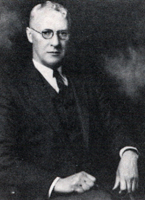
1949 The association
studies Muddy Creek Valley
as a much-needed waterfowl
rest-stop impoundment and
takes the first steps toward creating Moraine State Park.
(Read Paul g. Wiegman's article.)
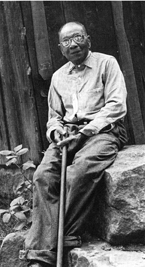
WPC's First Employee: Moses Wharton served as caretaker for McConnell's Mill
and the 1,000 protected-acres surrounding it.

